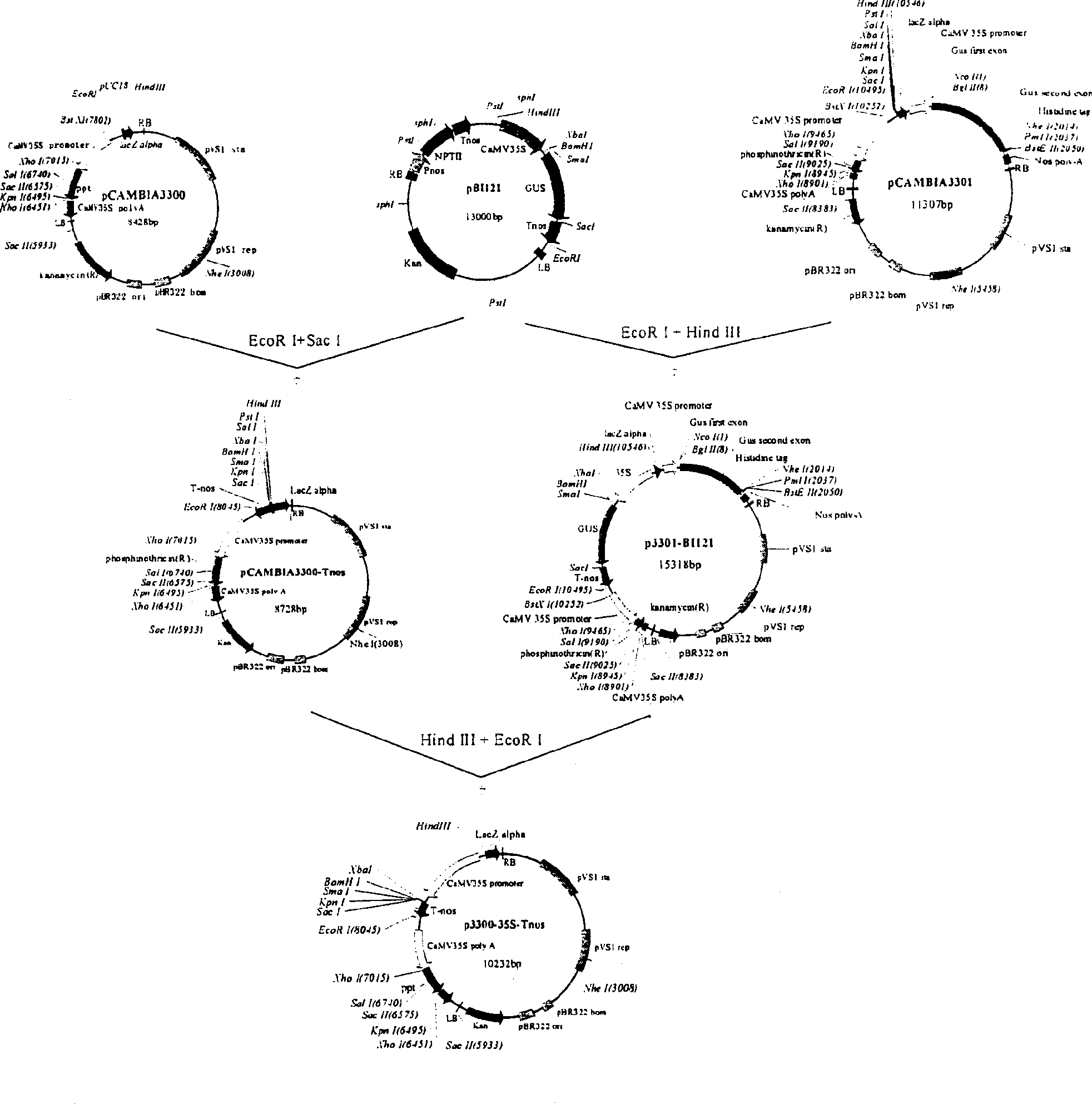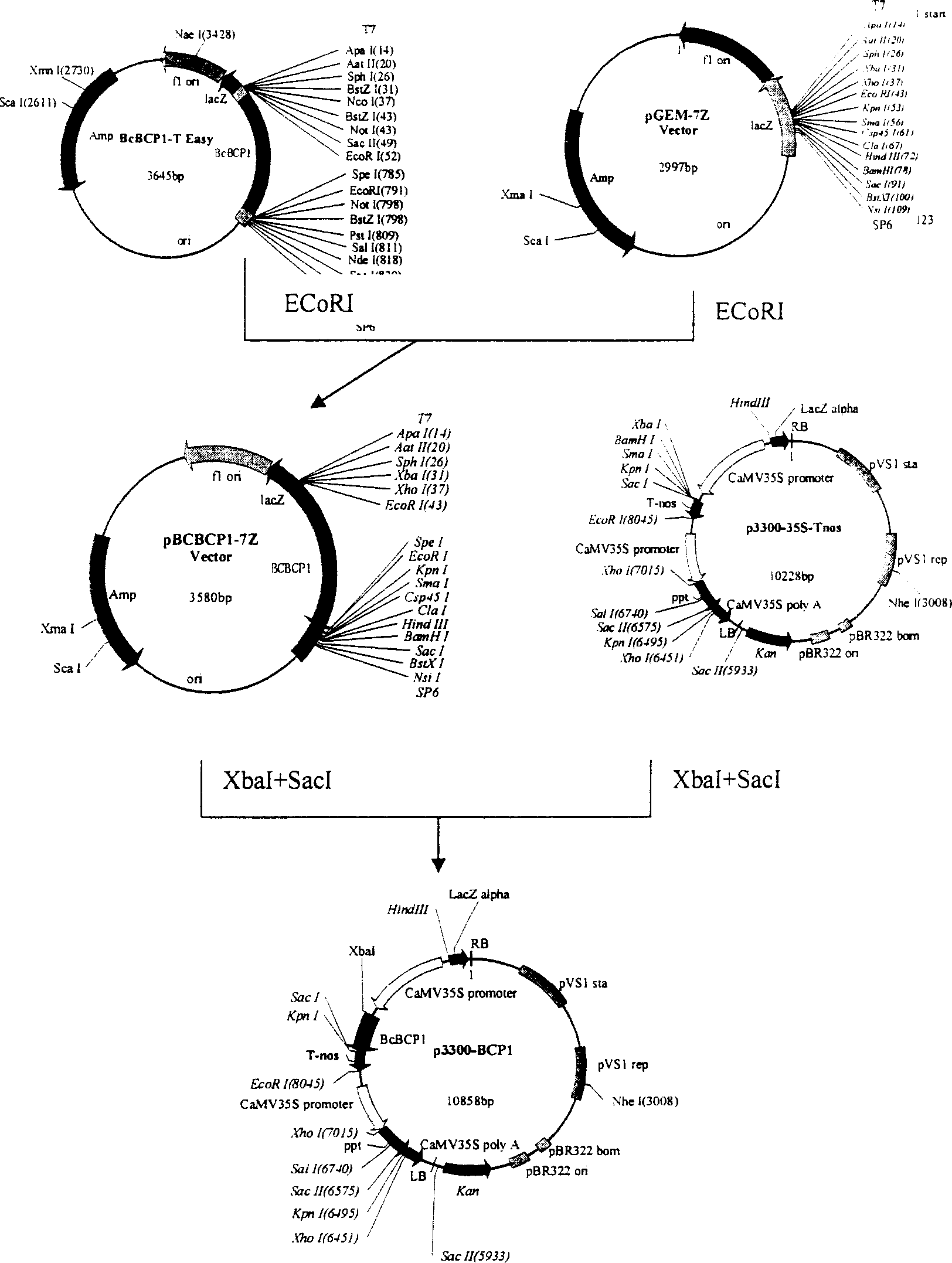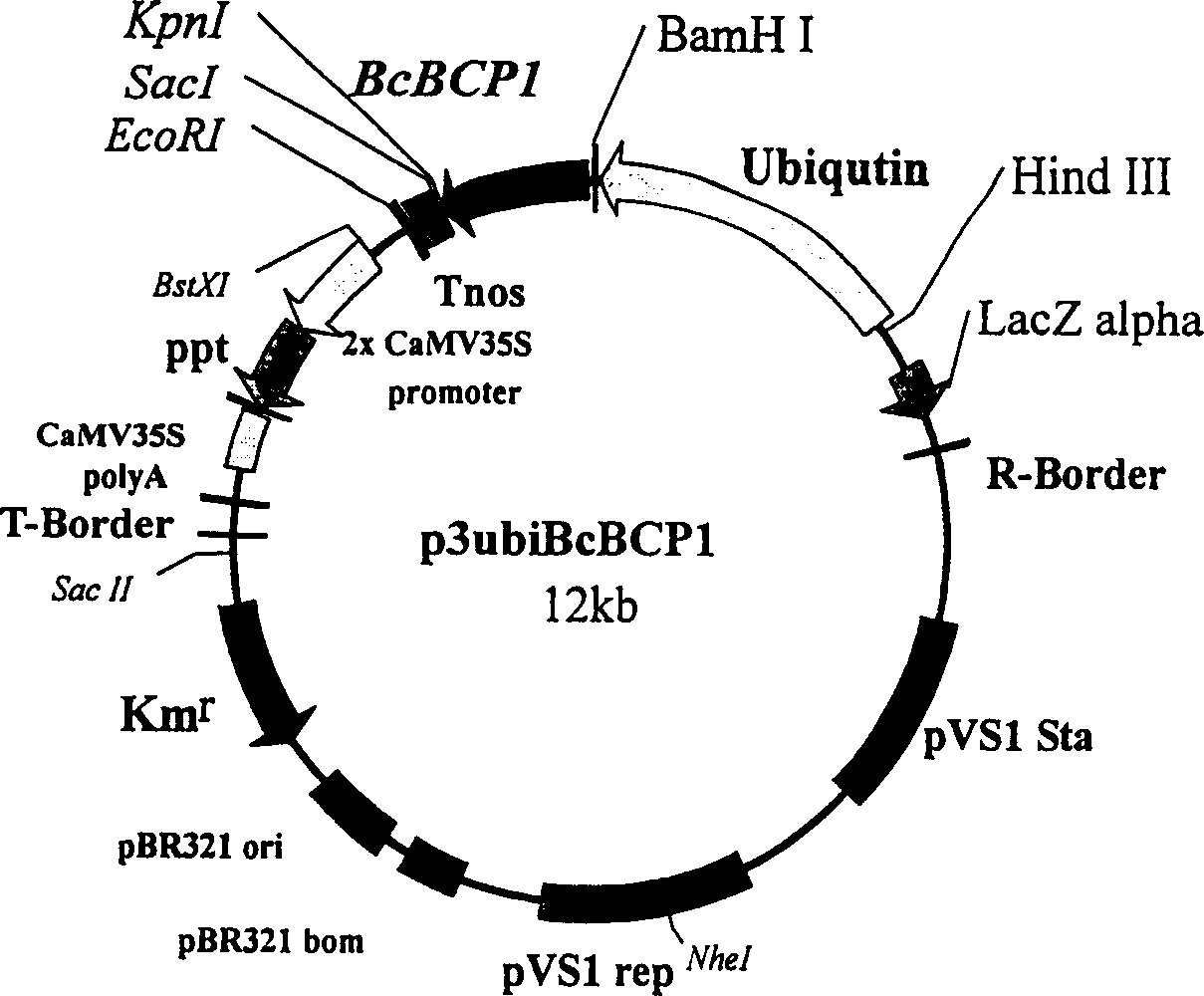Use of boea crassifolia BcBCP1 gene for breeding drought-salt-tolerant plants
A technology of spinocystis and genes, applied in the field of drought-related blue copper protein-like genes, can solve the problem of still few
- Summary
- Abstract
- Description
- Claims
- Application Information
AI Technical Summary
Problems solved by technology
Method used
Image
Examples
Embodiment 1
[0052] Example 1: Obtaining the blue copper protein-like gene BcBCP1:
[0053] 1. Obtaining the BcBCP1 gene fragment
[0054] In order to obtain the sequence tags differentially expressed under drought stress in Cymbidium crassicarpa, we adopted the method of mRNA different display combined with reverse Northern blotting. Extract the total RNA of Cymbidium sphaeroides that was induced by drought (about 43% of water loss) and grown in natural environments without drought treatment. According to the instructions of the fluroDD kit, three anchor primers (AP1, AP6 and AP10) and Four random primers (APR7, APR9, APR18 and APR20) were combined for mRNA differential display analysis, and the cDNA fragments obtained were separated by 5.6% denaturing polyacrylamide gel electrophoresis. The difference display was repeated 3 times, and 26 fragments that appeared in the 3 experiments were selected for further analysis. Put the excavated fragments into 30ulTE, incubate at 37°C for 1-2 days, tak...
Embodiment 2
[0074] Example 2: Construction of plant expression vector:
[0075] See the structure of plant expression vector p3300-BCP1 figure 1 .
[0076] Construction of plant expression vector p3300-BCP1: pBI121 was digested with HindIII and EcoRI to recover a 2.8 kb fragment, pCAMBIA3301 was digested with HindIII and EcoRI, and ligated with the recovered 2.8 kb fragment, named p3301-121. At the same time, p BI121 was digested with EcoRI and Sac I to recover small 0.2kb fragments, pCAMBIA3300 was digested with EcoRI and Sac I, and ligated with the above 0.2kb small fragments to obtain a plasmid named p3300-Tnos. The p3300-Tnos was digested with HindIII and SacI to recover a small 0.2kb fragment, and p3301-121 was digested with HindIII and SacI to connect the 0.2kb fragment to obtain a plasmid named p35S-3300-Tnos. The BcBCP1 gene was ligated to the pGEM-Teasy vector and named pT-BcBCP1. pT-BcBCP1 was digested with EcoRI, the 0.6kb fragment was recovered and the vector pGEM-7Z was digested...
Embodiment 3
[0081] Example 3: Transformation of Agrobacterium:
[0082] (1) Preparation of Agrobacterium Competent
[0083] 1. Pick a single colony of Agrobacterium and inoculate it in 5ml of LB / YEB liquid medium containing appropriate antibiotics, and cultivate overnight at 28°C and 250rpm with shaking;
[0084] 2. Inoculate 1:100 in 40ml LB / YEB liquid medium containing appropriate antibiotics and continue to culture for 4-6h;
[0085] 3. Centrifuge at 5,000 rpm for 10 min at 4°C and remove the supernatant;
[0086] 4. Pre-cooled 0.05M CaCL with 600μl ice 2 Solution washing bacteria;
[0087] 5. Centrifuge at 5,000 rpm for 10 min at 4°C and remove the supernatant;
[0088] 6. Pre-cool 0.05M CaCL with 200μl ice-pre-cooled ice 2 Resuspend the bacteria and store at 4°C.
[0089] (2) Conversion
[0090] 1. Add about 0.5-1.0 μg plasmid DNA to competent Agrobacterium, mix gently, and place on ice for 5 minutes;
[0091] 2. Place in liquid nitrogen for 3 minutes;
[0092] 3. Incubate at 37°C for 5 ...
PUM
 Login to View More
Login to View More Abstract
Description
Claims
Application Information
 Login to View More
Login to View More - R&D Engineer
- R&D Manager
- IP Professional
- Industry Leading Data Capabilities
- Powerful AI technology
- Patent DNA Extraction
Browse by: Latest US Patents, China's latest patents, Technical Efficacy Thesaurus, Application Domain, Technology Topic, Popular Technical Reports.
© 2024 PatSnap. All rights reserved.Legal|Privacy policy|Modern Slavery Act Transparency Statement|Sitemap|About US| Contact US: help@patsnap.com










